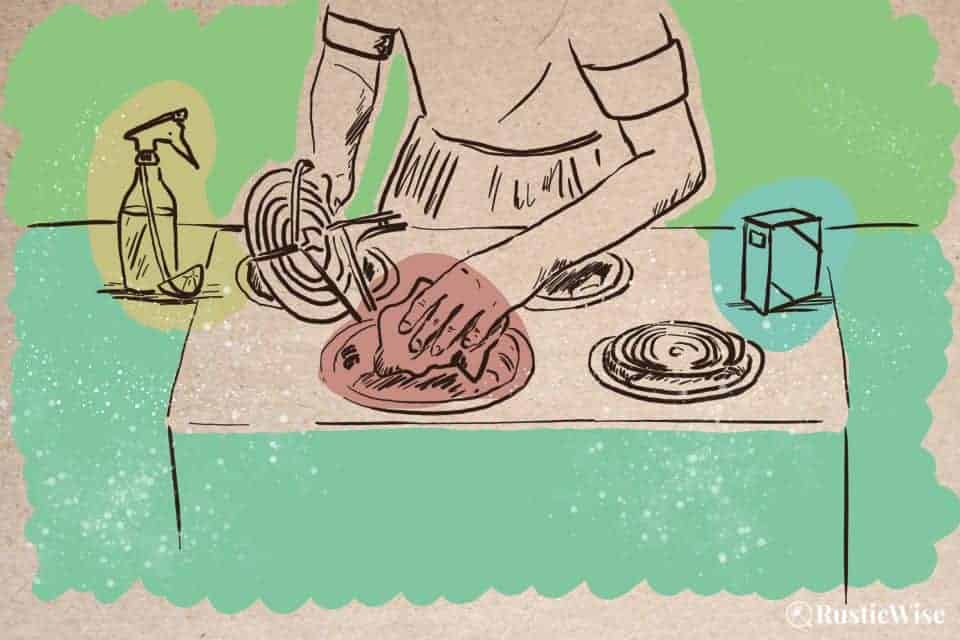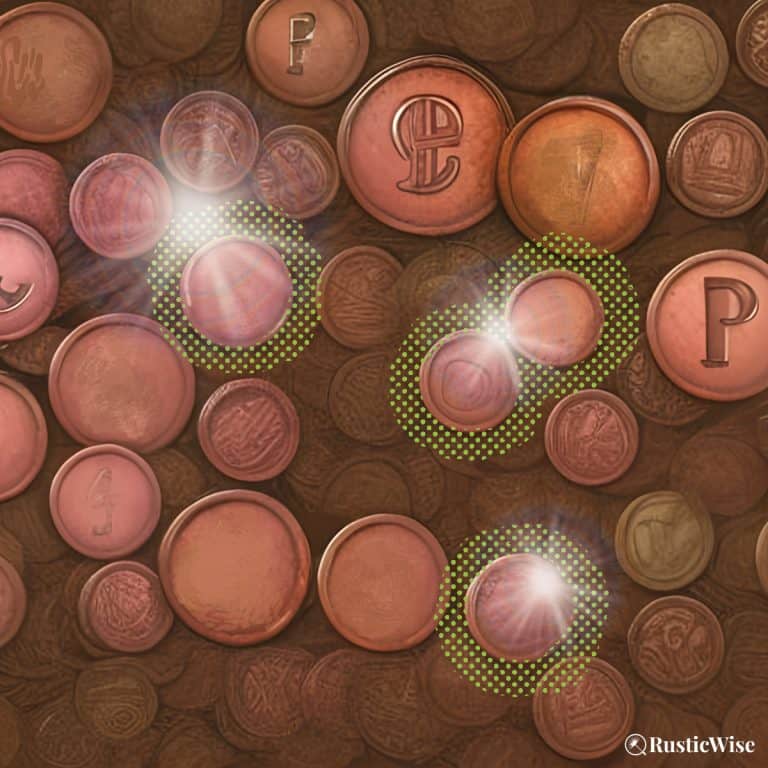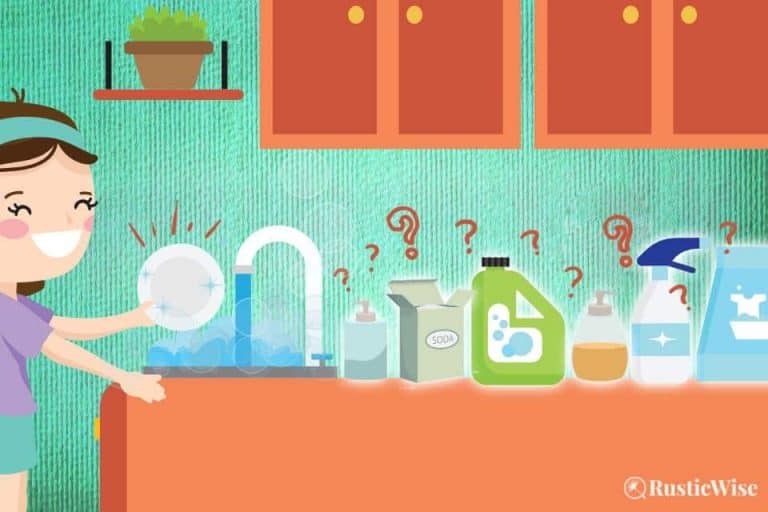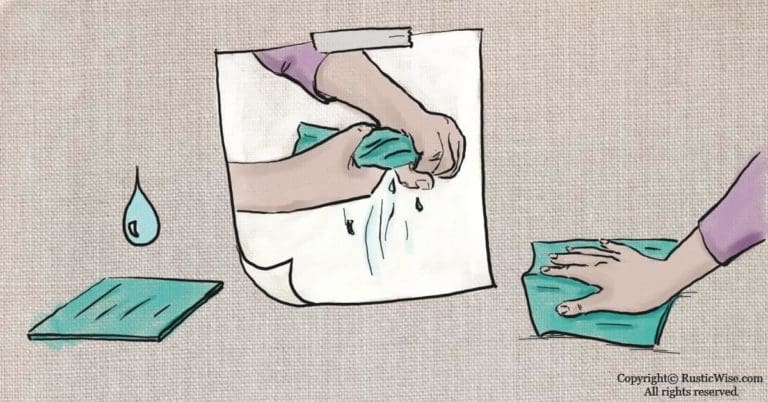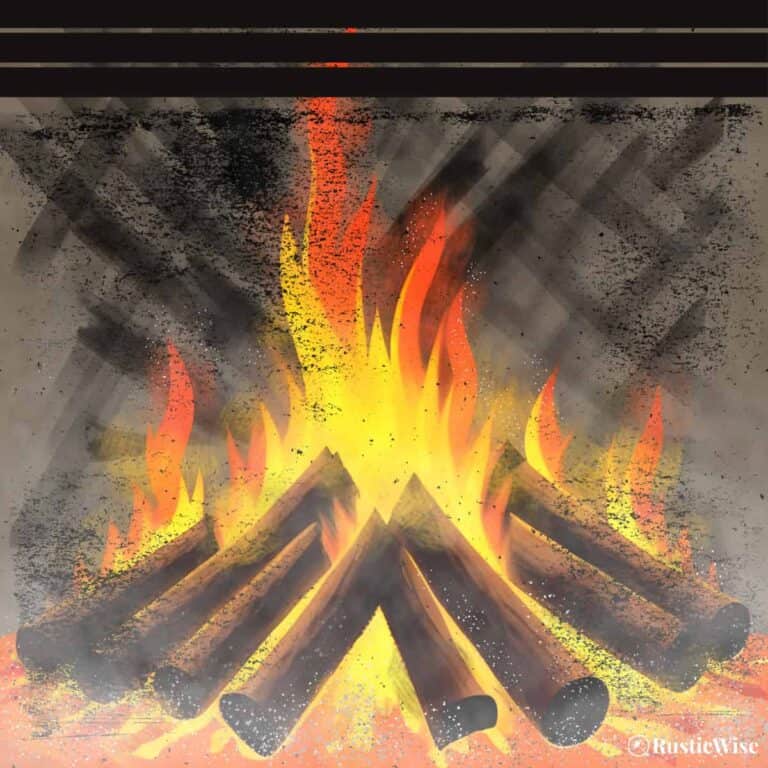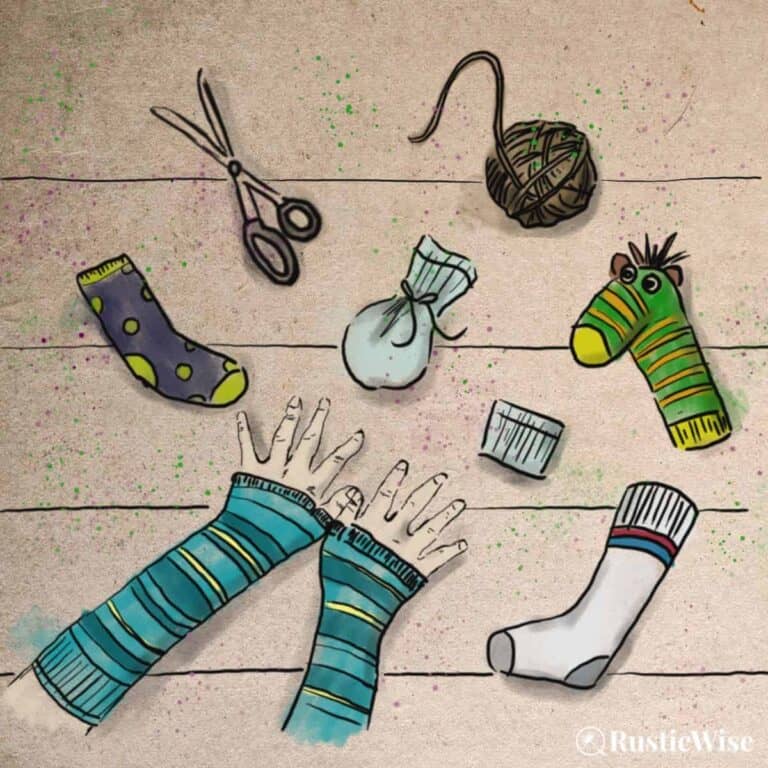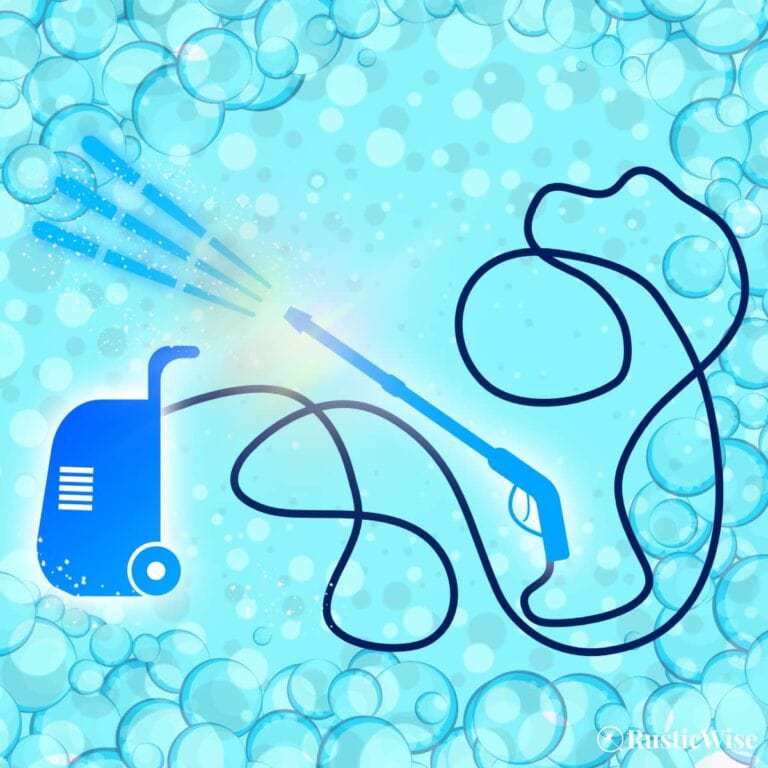Best Tips on How To Clean Coil Stove Top, Burners, and Drip Pans
Does your cook top contain food remnants from your past several meals? Splatters and spills are a part of cooking and stove tops take the brunt of it.
If you’ve let your stove cleaning slide for too long, you might have a tough task ahead of you.
If you’re wondering how to clean coil stove tops, we’ll show you how to tackle everyday cleaning, plus tips on everything from mild to stubborn stains. So put away those harsh chemical cleaners and any metal utensil that might damage surfaces.
Using a few natural pantry supplies, we’ll show you how to do a deep clean of your coil stove top, plus tips on keeping it sparkly clean.
Electric coil stove top anatomy
Before we dive right in, let’s go over a few basic coil stove parts. ¹
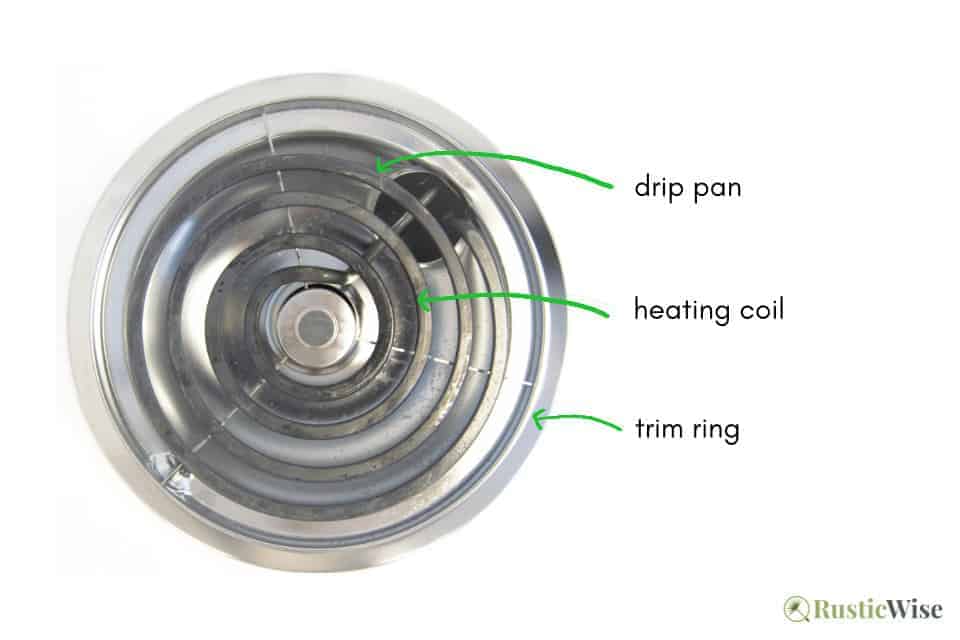
Credit: RusticWise
- Drip pan (aka stove liner): A metal bowl that sits beneath each burner to catch spills and drips. The drip pans are often the most stained part of a standard cook top!
- Heating coil: The coil burners are the parts that cook your food and turn red when hot. Most electric coils are made of nichrome, a combination of nickel, chrome, and iron. Nichrome has a high melting point and is flexible. Never submerge electrical components in water! Most messes on heating coils will blacken and harden and should be fairly easy to remove once cooled with a damp cloth.
- Trim ring: A metallic rim that fits around the top of each heating element. They are often made of shiny chrome. Most stoves have removable trim rings.
Round up a few stove cleaning supplies
When cleaning a stove top, avoid using anything too harsh or abrasive which can scratch, chip, or otherwise damage surfaces.
When cleaning up a tough mess, it’s tempting to reach for harsh chemical cleaners. You’ll be surprised that with a bit of soaking, natural ingredients like baking soda and vinegar work wonders!
(Besides, do you really want to use chemicals on your stove, an area where you’re preparing food?)
- Soft cleaning cloth or sponge: For wiping up day-to-day messes and crumbs, a soft cleaning cloth or sponge works great.
- Drying cloth: Remember to thoroughly dry surfaces on a stove top to keep it looking clean and streak-free. It’s especially important to allow heating coils to dry completely before re-inserting.
- Gentle plastic scouring pad, or stiff-bristled nylon cleaning brush: Gentle abrasive scrubbers help to boost scouring action without scratching surfaces. Choose plastic scrubbies, or nylon cleaning brushes which are less abrasive than steel wool pads.
- Mild soap such as dish soap or Castile soap: There’s a reason regular dish soap works so well to remove grease from dinner dishes—surfactants. Surface active agents, aka surfactants in soap, reduce the surface tension of water making it easier for grease, oil, and food particles to wash away. Castile soap, a plant-based non-toxic soap, works much the same way.
- Baking soda: Sodium bicarbonate is an all-natural scouring powder that’s effective, yet gentle enough on virtually all surfaces. As a mild abrasive alkaline powder, baking soda helps loosen caked on grease and removes odors.
- Vinegar: A regular bottle of white vinegar typically contains around 5 percent acetic acid. This acidic quality helps to cut through grease, gunk, and remove mineral deposits. Vinegar is also a mild disinfectant and deodorizer.
- Plastic or wooden scraper: If you have tough burnt on bits of food, a plastic, or wooden scraper is your best friend. Never use metal scrapers or utensils which can permanently scratch up your stove top surface.
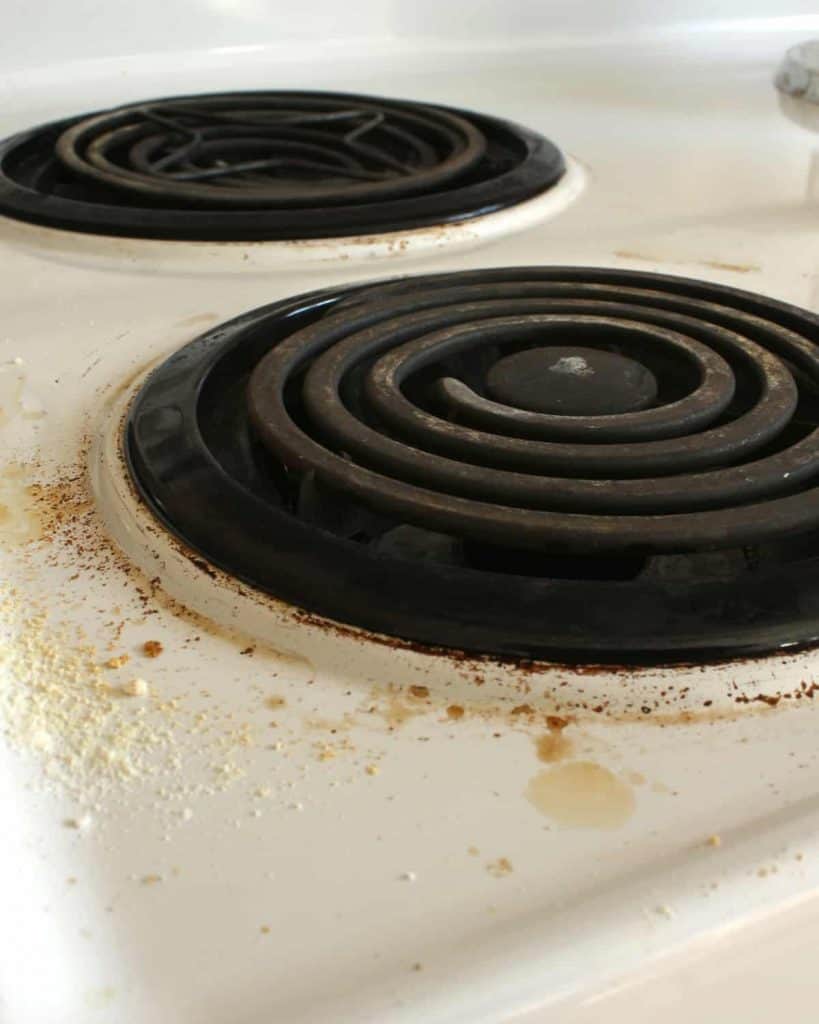
Safety tips for cleaning an electric coil stove top
Before you get started, let’s go over a few safety concerns and cleaning best practices.
You might come across some online advice telling you to heat your stove for a few minutes then letting it cool before removing food bits. I would NOT recommend doing this!
The thinking is that the heat makes it easier to remove burnt up food bits. However, in my experience, heating the stove coils can also make the burnt on food stick on like glue. Besides, it’s a heating hazard.
Here are a few other cleaning tips:
- Avoid using coarse steel wool scouring pads, or other metal utensils such as knives when cleaning a cook top. You’ll just end up with scratched up surfaces that are more prone to collecting grime and grease!
- Never mix cleaners together such as a commercial oven cleaner with ammonia or bleach. This will create toxic fumes.
- Be careful if lining drip pans with aluminum foil—some types of tin foil may catch on fire!¹
- Remember to unplug the stove first if you’re planning on cleaning the burner coils to avoid getting a shock.
- Never submerge the heating coils in water (they are an electrical component, after all!).
How to clean coil stove top for everyday messes
The best way to keep a clean stove is to give it a quick wipe with soapy water after you’re done cooking (and once the stove is cool to the touch).
Make a soapy solution with dish soap and warm water. Using a clean cloth, dip the cloth into the soapy water and wring out excess water. Wipe clean. Follow up by drying all surfaces for a streak-free clean.
If you prefer using cleaning solution in a spray bottle, we have an easy DIY all-purpose cleaner recipe that works great for electric coil and glass stovetops.
DIY Gentle All-Purpose Cleaner Recipe
The following recipe is safe for stove and oven and most metal surfaces.² But, since this recipe contains vinegar, it’s not recommended for use on porous stone countertops such as granite.
You’ll need:
- 1/4 cup vinegar
- Optional: 12–20 drops essential oil (lavender, lemon, orange or tea tree essential oils are good choices)
- 2 cups boiled or distilled water
- Empty spray bottle
- If you have room temperature distilled water, skip to step 2. Otherwise, boil 2 cups of water and let it cool to room temperature.
- Add the water to the spray bottle.
- Add the vinegar and essential oils. Shake well to mix.
Use your all-purpose spray for wiping up mild messes on your stove top, or for daily kitchen maintenance.
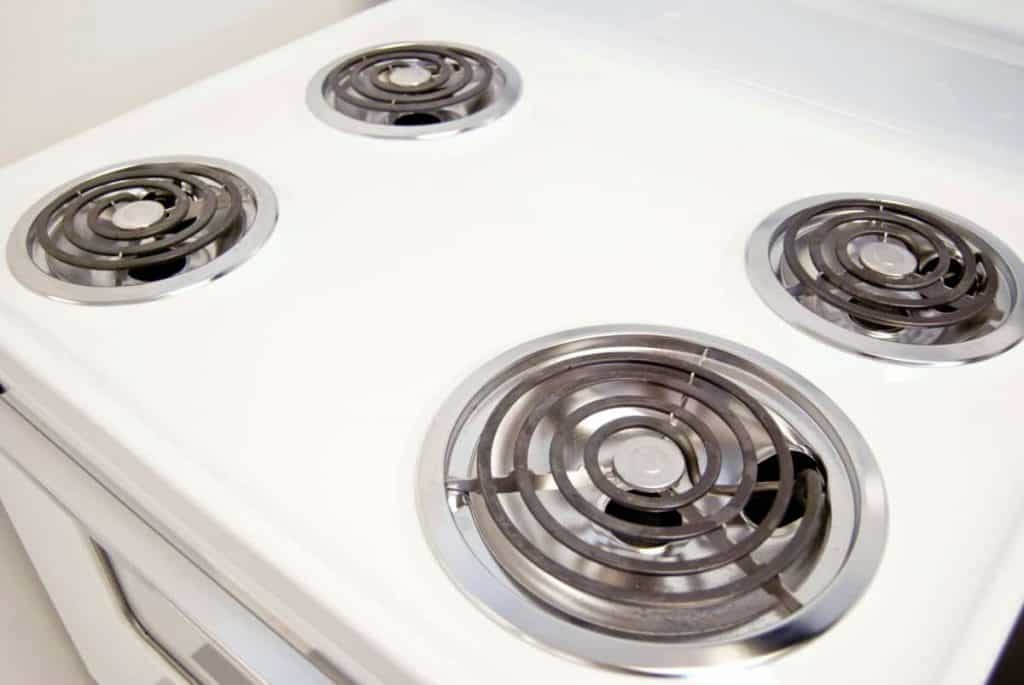
How to clean moderate stains on coil stove top
When dish soap, Castile soap, or your DIY all-purpose cleaner isn’t cutting it, it’s time to break out the baking soda and/or vinegar!
Removing stove stains with a baking soda paste
For moderate stains such as burnt on food bits, or baked on sauce spills, make a simple baking soda paste.
Baking soda is a “scratchless” abrasive meaning it’s gentle enough for most surfaces, including stove tops. Sodium bicarbonate is also great for removing food soils and baked on grease.
In a small bowl, mix baking soda with just enough water to create a thick paste. Apply the paste with a clean damp sponge or brush. Work in small circles to scrub out stains. Follow with a wipe using a cleaning cloth and wipe dry.
You can also sprinkle baking soda directly onto the soiled surface. Use a slightly damp sponge or brush to scrub clean.
How to use baking soda and vinegar to clean stove
The combination of baking soda (a mild alkali) combined with vinegar (a mild acid) creates a chemical reaction—fizzing cleaning action!
Tip: To get the most of this cleaning duo, you want the chemical reaction to occur directly on the soiled surface. This is why it’s important you avoid pre-mixing baking soda and vinegar together before applying. Instead, apply vinegar first, followed by baking soda next.
You’ll need:
- Baking soda
- Undiluted white vinegar in a spray bottle (this helps target the stains)
- Plastic scrubbie or stiff-bristled nylon brush
- Spray vinegar onto soiled areas. Let it sit for several minutes to let the acetic acid loosen up dirt.
- Sprinkle a bit of baking soda over the vinegar. Watch the fizzing begin! Let the vinegar and baking soda solution sit for several minutes.
- Follow up by gently scrubbing off any stains. Rinse area and wipe dry.
How to clean coil stove top: a step-by-step deep cleaning guide
Maybe you accidentally let your pot of sauce boil over, creating a huge sticky mess. Or, maybe you can’t even remember the last time you cleaned your cook top (don’t worry, we’re not judging you).
You need to do a deep clean of your electric coil stove top, pronto! Everything from the surface to the electric coil burner and crusty drip pans needs cleaning.
Step 1: Unplug stove
Anytime you’re going to clean the electric coils, just play it safe and unplug the stove from the wall outlet. Yes, it’s a bit of a pain, but it’s better than getting a shock.
Step 2: Remove heating coils and clean
Most standard electric stoves have removable coils. Remove heating coils once cool.
To remove each electric stove heater coil:
- Locate where each heater coil plugs into the stove by looking for the prongs that fit through the drip pan and into the receptacle. Lift the opposite end up.
- Once the electric coil is lifted at a slight angle, gently pull so the coil releases from the receptacle. Most models have coils that remove fairly easily. If you have difficulty removing them, please consult with the owner’s manual.
- Set each heating coil aside.
If the heater coils are dirty, try the following:
- First, try wiping off any grease or grime using a clean dish rag dipped in soapy water.
- If that doesn’t work, make a baking soda paste by mixing just enough water to form a thick paste in a small bowl. Apply paste using a damp sponge. Wipe clean.
- Set the cleaned coils aside on a dishcloth to dry completely.
Step 3: Soak drip pans and trim rings in soapy solution and clean
Next, remove the trim rims and drip pans. These are often the dirtiest parts of the stove!
You’ll need dish soap, vinegar in a spray bottle, baking soda, and a sponge or plastic scouring pad.
- Fill a clean sink with hot water and dish soap. Let the soiled drip pans and trim rims to soak in the soapy solution for at least 30 minutes, or overnight if needed. This helps loosen burnt on food, grime, and grease.
- Remove the trim rings and drip pans from the soapy water.
- Place the trim rings and drip pans into a separate wash basin. Spray white vinegar onto the entire soiled surface. Let it sit for at least 15–20 minutes. The acetic acid helps to cut through the grease and further loosen grime and dirt.
- Next, liberally sprinkle baking soda over the vinegar. The solution will fizz. Let the baking soda and vinegar sit for another 20–30 minutes.
- Use a plastic scrubber to scrub off any dirt.
- Finish with another soapy water soak and scrub to remove any food remnants.
- Rinse clean with water and dry with a clean cloth.
Tip: If your trim rings and drip pans are still not clean, check out the cleaning hack below, using ammonia.
Step 4: Clean cook top surface
While the dirty drip pans and trim rims are soaking, it’s time to clean the stove top surface.
- Spray the surface of the stove top with your DIY all purpose cleaner. Let it sit for several minutes to loosen dirt and grime.
- Remove the control knobs by gently pulling. Wash the knobs either in soapy water or using an all-purpose spray. Wipe dry.
- Use a plastic or wooden scraper to gently remove any burnt on food or stains.
- Apply a baking soda paste where needed to scrub out stubborn stains.
- Rinse the surface with a clean dish rag and wipe dry.
- Reattach cleaned control knobs.
Step 5: Reassemble stove and plug in
Once the heating coils are completely dry, and the drip pans and trims are all clean, it’s time to reassemble the stove.
- Replace the drip pans.
- Reposition the trim rings.
- Re-insert the stove top coils into the electrical outlets.
- Plug-in the stove.
Stove cleaning hack for heavy-duty stubborn stains
For extremely stubborn stains and baked on grease that still won’t come off even with dish soap, vinegar, and baking soda, GE Appliances recommends using ammonia to get the job done.
Use this as a last resort, as household ammonia is a strong chemical that can harm eyes, skin, and the respiratory system.
Note: I always try to avoid using harsher cleaners such as ammonia if possible. Ammonia releases harmful fumes so take care not to breathe in and work in a well-ventilated room. Ammonia is also a skin and eye irritant—wear gloves and protective eyewear. Never mix ammonia with bleach as it creates toxic fumes!
You’ll need:
- Ammonia
- Several plastic bags or containers (you’ll need a separate bag or container for each drip pan or trim ring
- Place each soiled drip pan or trim ring into a separate bag or container. Add 1/4 cup of ammonia. If using a bag, seal the bag closed. The fumes help to soften the grease.
- Let the solution soak overnight.
- Remove each part from the bag or container in the morning, taking care not to breathe in the fumes when opening.
- Rinse thoroughly with water.
- Dry and polish with a soft cloth.
Related questions
Can you use Windex on an electric stove top?
You’ll see mixed reviews online about using Windex on stove tops. Some say they’ve been using Windex on their electric stove top for years. Others say that because Windex contains ammonia, this may scratch stove tops (particularly glass stove tops) with regular use.
I personally stay away from using Windex (along with other chemical cleaners) on my stove top because I don’t like the idea of using harsh chemicals anywhere near my food. Plus, a simple dish soap solution, or baking soda and vinegar works well to remove grease—which makes up the bulk of the soils that develop on most stoves.
If you use Windex occasionally on your stove top, it shouldn’t be a problem. But for regular use, I would use a non-toxic DIY cleaner such as the one listed above, or baking soda.
How to clean a stove top when the top parts are non-removable?
If you happen to have a stove model with parts that don’t come off, I feel your pain. The best way to keep these types of stoves clean is to wipe up any spills immediately before they become stains.
Use an all-purpose cleaner (such as the DIY recipe above) and let it sit for several minutes before wiping. Use a plastic or wooden scraper to chip off any food bits. A baking soda paste works wonders.
Would you like more timeless tips via email?
Fun tips to help you live an independent, self-sustaining lifestyle. Opt-out at any time.


References
- Mississippi State University, Cleaning Your Electric Stove, https://extension.msstate.edu/sites/default/files/publications/information-sheets/is1980.pdf. Accessed May 2022.
- University of Arkansas, Clean and Green Homemade Cleaners, https://www.uaex.uada.edu/environment-nature/water/quality/clean-green-homemade-cleaners.aspx. Accessed May 2022.
- GE Appliances, RANGE CLEANING CHROME DRIP PANS AND TRIM RINGS, https://products.geappliances.com/appliance/gea-support-search-content?contentId=18979. Accessed May 2022.

Author: Josh Tesolin
Josh is co-founder of RusticWise. When he’s not tinkering in the garden, or fixing something around the house, you can find him working on a vast array of random side projects.

